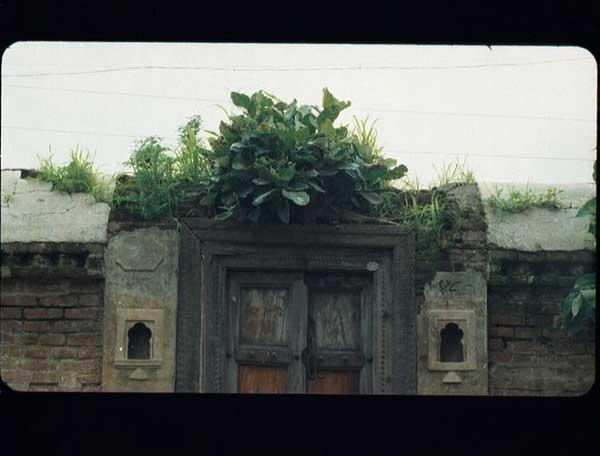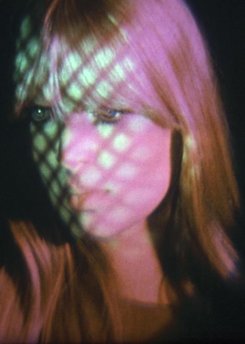Cinema/Video
Paris-Delhi-Bombay.../ Des ascètes et des dieux
15 Jun 2011
15 Jun 2011

The event is over


Ashish Avikunthak was born in Jabalpur (Madhya Pradesh). He lives and works in Connecticut (U. S.).
Website: www.avikunthak.com
Filmography
1997 Et Cetera / 16mm
1999 Kalighat Fetish (Kalighat Athikatha) / 16mm
2001 Rummaging for Pasts / dv
2002 Performing Death / dv
2002 Dancing Othello (Brihnnlala Ki Khelkali) / 16mm
2005 End Note (Antaral) / 16mm
2007 Shadows Formless (Nirakar Chhaya) / 35mm
2010 Vakratunda Swaha / 35mm
Bibliography
Amrit Gangar, « In conversation with Ashish Avikunthak", Cinema of Prayoga: Indian Experimental Films 1913-2006, edited by Brad Butler and Karen Mirza, London, no.w. here, 2006
Ashish Avikunthak
As a child, Ashish Avikunthak was already intrigued by sacrifices executed in religious ceremonies in the Kalighat temple in his neighbourhood in Kolkata, as he describes, 'The first time I saw a buffalo being sacrificed was during my visit to the temple during the Kali Puja festival. At the age of six or seven, I was simultaneously fascinated and abhorred by the event'. Later, he experienced death closely when he worked at Nirmal Hriday, a home for the dying that was close to the Kalighat. Furthermore, he has a sociological and anthropological background, having studied in the Bombay University and the Stanford University. These observations, experiences and formations are seen transposed in his films which are at the intersection of the archaeology, the anthropology and the cinematography.
According to Amrit Gangar, in Avikunthak's films, 'specific ritual exercitations have been focused on and their movements, contemplated upon, by studying dynamics of their etymologies within anthropological-cinematographic framework.' Gangar proposes the term 'Avikunthak's "figurative" cinematography' and thinks that 'performativity and ritual play a significant part' in these films by means of 'evoking references within history of anthropology, and as an engagement of the ritual, myth and time. And self.' Indeed, the prevalent anthropological aspect of Avikunthak's work goes in tandem with a persistent existential questioning, an issue that he treats mainly through representations of rituals along with the violence and the morbidity involved. As he describes, 'Kalighat Fetish/Kalighat Athikatha is contemplation about two ideas - transgression and morbidity. They are connected by the act of transformation, leading to death. [] They are part of the same act of reverence and anguish.'
Ritualistic and sacrificial elements, reflections over existence and death: these recurrent factors are also at the core of Vakratunda Swh, a film that involves not only the oblatory ceremonies for the Indian god Ganesa but also real death: the young man (a friend of the artist) appearing at the beginning of the film who had committed suicide sometime after the film was shot. If the worship of Ganesa (known for His 'pli-ability, spatially and temporally, geographically and historically') implies metamorphosis, transformation, transgression and regeneration, the same meanings are implied through the inaugurating scene where the young man is seen immersing the Ganesa idol into the water on the final immersion day of the ten-day Ganesa festival in Mumbai, as part of the rituals of the worship. Such parallels between ritualistic and performative acts and real cycle of death/life make the film 'transplantary', to borrow Gangar's term. And, for him, 'Vakratunda Swh seems transplantary partly also in the sense that it hones anthropology, archaeology and cinematography - anthropology, for the way Avikunthak contextualizes Ganesa; archaelogy, for the way he fathoms the landscapes and ruins of memory and myth, and cinematography, for the way he temporalizes space or spatializes time.'
By the compounded manner that the artist connects these dimensions, Vakratunda Swh is endowed with a provocative power particular to the artist's oeuvre, a power for 'delving deeper into far off associations, mythical, metaphysical, metaphorical and mundane at the same time.'
Sylvie Lin
References
Amrit Gangar, Vakratunda Svh: Transplantations. In Transcendence (first publication : Chatterjee & Lal Gallery, Mumbai)
Amrit Gangar, « In Conversation with Ashish Avikunthak », Cinema of Prayoga. No.where publication, 2006, London
Amit Dutta was born in 1977 in the region of Jammu (Jammu-et-Cachemire). He lives and works in India.
Filmography
2005 Ramkhind / dv
2007 To Be Continued (Kramasha ) / 35mm
2010 Nainsukh / 16mm
Where
Cinéma 2
When
15 Jun 2011
From 7pm